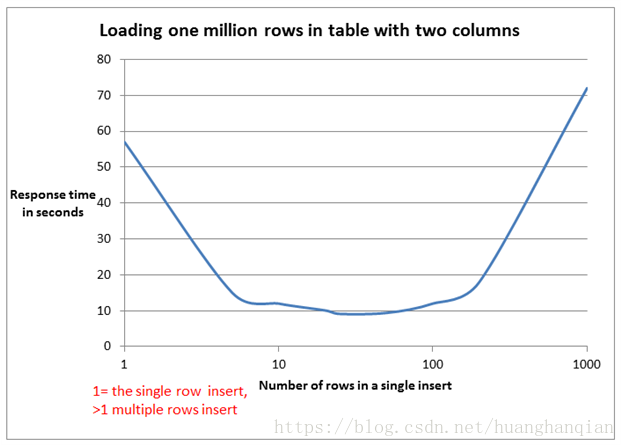Of course don't combine ALL of them, if the amount is HUGE. Say you have 1000 rows you need to insert, then don't do it one at a time. You shouldn't equally try to have all 1000 rows in a single query. Instead break it into smaller sizes.它强调,当插入数量很多时,不能一次性全放在一条语句里。可是为什么不能放在同一条语句里呢?这条语句为什么会耗时这么久呢?
Internally, it still generates the same single insert statement with many placeholders as the JDBC code above.从上述资料可知,耗时就耗在,由于我foreach后有5000+个values,所以这个PreparedStatement特别长,包含了很多占位符,对于占位符和参数的映射尤其耗时。并且,查阅相关资料可知,values的增长与所需的解析时间,是呈指数型增长的。
MyBatis has an ability to cache PreparedStatement, but this statement cannot be cached because it contains element and the statement varies depending on the parameters. As a result, MyBatis has to 1) evaluate the foreach part and 2) parse the statement string to build parameter mapping [1] on every execution of this statement.
And these steps are relatively costly process when the statement string is big and contains many placeholders.
[1] simply put, it is a mapping between placeholders and the parameters.

| 欢迎光临 IT评测·应用市场-qidao123.com技术社区 (https://dis.qidao123.com/) | Powered by Discuz! X3.4 |